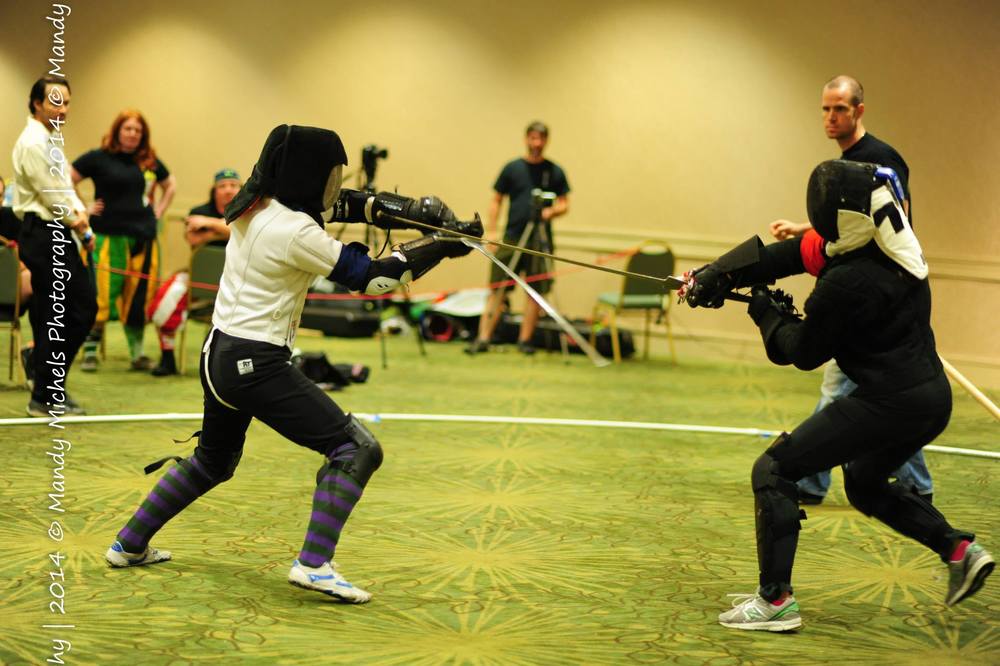Women's Longsword - BYOS
Longpoint 2015 hosted the largest Women's Longsword tournament to date in North America at 25 fighters. We will continue to host this event as long as the demand to host it continues to grow, as we believe it encourages overall participation.
In 2012 we had decided to do something a little different from what everyone else was doing—not to be different, but because we felt that we could positively impact the quality of tournament fighting through a custom-built rule set focused on rewarding the behaviors that we, as tournament organizers, wanted to see. Our experimental Longsword rules went over better than we might have anticipated. Fighters and judges responded positively, the internet was kind to us, and other events either used the rules almost completely (Kriegschule, Capitol HEMA Open, Fechtschule New York) or incorporated some of the conventions first used in Longpoint rules (Boston Sword Gathering, Fechtschule America, International Lowlands HEMA Gathering, SoCal Swordfight), just as we had done by borrowing rules and features from Fechtschule America, Swordfish, and the Arts of Mars Worldwide Open Championship. Our goal in designing these rules was to promote and reward safe, “technical” historical fencing without arbitrarily limiting or forbidding the “freestyle” approach to HEMA competition that has become the norm in past years.
Critics bemoan the scarcity of strong technical fencing in competitive HEMA. Apologists have rightly pointed to community skill levels, the developing nature of interpretations, the use of inadequate simulators, and the lack of purpose-made protective equipment. As each of these problems is being solved, we must now turn to the rules that we fence under.
If all targets are worth equal points, and all techniques are judged the same, then it stands to reason that a fencer will opt for the closest target using the simplest technique in order to win. Tournaments are games. Games have rules. In all games, rules are exploited by both sides, and the side that performs the best under the rules’ framework wins. Instead of seeking to prevent “gaming the system,” the Longpoint rules are meant to use gaming the system to promote what we believe is better fencing. More carrot, less stick.
In developing the Longpoint rules we operated on the following assumptions regarding “good technique” as broadly found throughout our interpretations of the historical sources:
- It leads to hitting the opponent without also being hit at the same time or shortly thereafter.
- Movements are measured, balanced, and stable.
- Good technique ultimately leads to a wound to the head or torso.
- Technical skill is best demonstrated by techniques which actively interrupt and control the opponent’s weapon while striking.
We acknowledge that there are other approaches, interpretations, and thoughts on the matter. In the case of Longpoint rules, however, this is what we’re looking for.
Longpoint 2015 Longsword Rules
The Longpoint 2015 rules will be published once a draft has been completed.

2014 Medalists
Women’s Steel Longsword
Gold: Kiana Shurkin, Maryland Kunst des Fechtens, USA
Silver: Katy Kramlich, Wisconsin Historical Fencing Association, USA
Bronze: Amanda Trail, Iron Crown KDF, USA
Technical Award: Amanda Trail, Iron Crown KDF, USA
